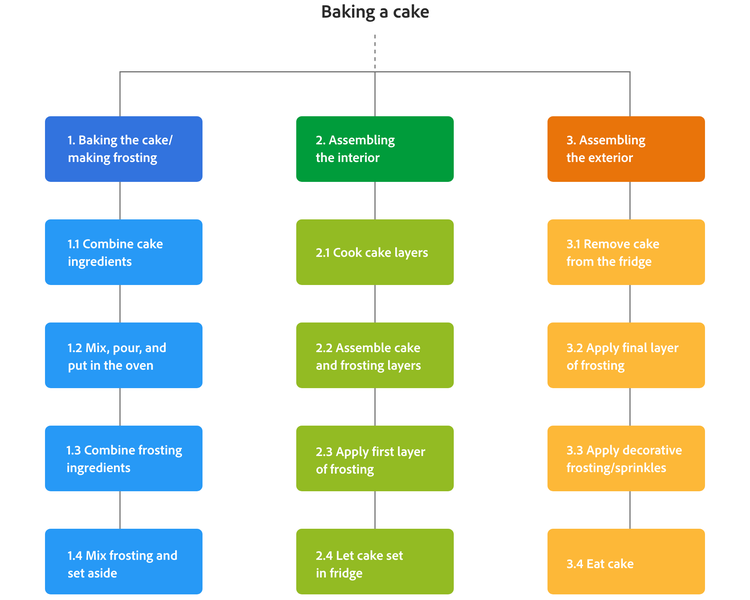Depending on the size and scope of your project, your work breakdown structure may have five steps or 15. There is no universally correct number — just keep breaking down the work into its smallest parts. But these are some important steps to creating a WBS.
1. Identify key team members
It’s essential to identify key team members early in the process so that they can be involved in planning and scheduling the project. These team members can also help identify deliverables and ensure that all relevant information is included in the project. When key team members are identified, it becomes easier to manage information and delegate responsibilities.
2. Define project scope and objective
Key team members will assist with this process. Defining the scope of the project begins with identifying its goals and objectives, as well as its boundaries and limitations. Defining the goal early ensures that everyone involved in the project is clear about what they’re working toward and what is expected of them.
3. Gather critical documents
To maintain a sense of clarity and teamwork, it’s crucial to collect all relevant documents and information that will be needed throughout the project. Ensuring that each team member has access to the necessary resources enables them to complete their work efficiently and effectively. This might include previous project plans, budget information, or technical specifications.
4. Define key phases and deliverables
This step involves key team members using their understanding of the project and breaking it down into smaller, specific parts. After dividing the larger project into phases, such as planning, design, feedback, and development, they can break each of those phases down into even more specific deliverables. Keep in mind the roles of each team member and how those deliverables could be divided between them.
5. Create work packages (tasks and subtasks)
After the project has been broken down, deliverables can be divided into individual tasks and delegated to the proper team members. The names of these tasks may vary, but they’re often referred to as elements, levels, deliverables, subtasks, or work packages. Breaking down deliverables is like making a timeline. Subtasks should be completed in a chronological order that leads to the completion of the deliverable, and each deliverable should, in turn, lead to the completion of the larger tasks and the overall project.
6. Create a WBS dictionary
It can be confusing for team members to begin a task that they had no part in creating. Crafting a detailed document that defines each task and deliverable, along with the associated responsibilities, can significantly improve the workflow process. A WBS dictionary provides team members with a clear understanding and a place to resolve any confusion, allowing them to continue working efficiently. The dictionary should include information on each task or deliverable, including the work required, duration, and costs.
After each task has been broken down and assignments have been made, find a schedule that works for you and your team. The schedule should include information on each task or deliverable, along with the timeline for completing them. The format of the schedule can vary depending on the project's needs and the team's preferences.



